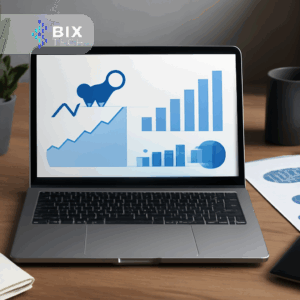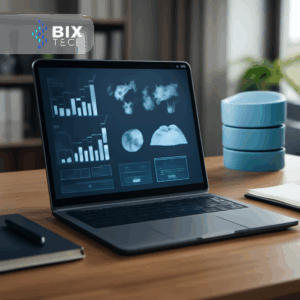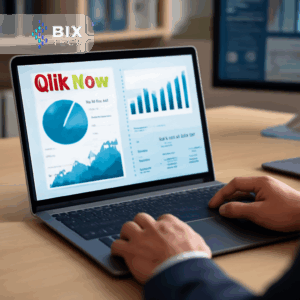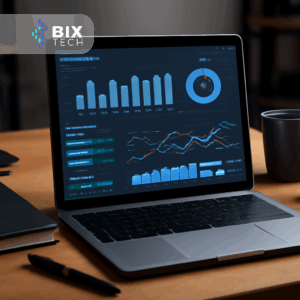If you follow the tech news or even our blog, you’re probably tired of hearing that Generative Artificial Intelligence is increasingly revolutionizing the way organizations handle their processes and workflows. However, one technology that stands out within this vast umbrella is what’s known as Multi-agent Systems (MAS).
Regarded as one of the major technological trends for 2025, MAS are on the radar of top business leaders. According to Gartner’s 2025 Top Strategic Technology Trends report, by 2028, agent-based AI will be behind at least 15% of day-to-day business decisions.
From now on, you’ll understand exactly what Multi-agent Systems are, their main applications, and benefits. Keep reading and learn with BIX Tech!
What are AI Agents?
Before we dive into multi-agent systems, it is essential to understand the basic concept of AI agents. We are referring to any autonomous system designed to interact with its surrounding environment, collect information, and make decisions based on that data to achieve specific goals. Although the goals are defined by humans, the agent has the ability to independently choose the most appropriate actions to achieve them.
Some of the main characteristics of AI agents are:
- Autonomy: Does not depend on human intervention to perform its functions.
- Perception and interaction with the environment: Uses sensors or APIs to collect information and interpret the context.
- Decision-making capacity: Processes data, evaluates possibilities, and chooses the best action based on predefined goals and rules.
- Continuous learning: Some agents can incorporate Machine Learning techniques to improve their decisions over time.
How does it work in practice?
Imagine that your organization needs to manage its inventory. Without an AI agent, the process is much more manual and prone to errors. An employee would need to constantly monitor inventory levels, possibly using spreadsheets or simple systems. Once a product reaches critical levels, that person would have to manually check suppliers, compare prices, negotiate deadlines and, finally, generate replenishment orders. All of this work would require time and attention, increasing the risk of delays, incorrect orders or even product shortages due to slowness or errors in the process.
With the help of an AI agent, inventory monitoring would be continuous, as well as detecting when a product was low in availability. Thus, the agent itself would be responsible for automatically triggering replenishment, consulting suppliers, comparing prices and even generating purchase orders. It acts autonomously to ensure that inventory levels are maintained, reducing delays and improving logistics efficiency.
What about Multi-Agent Systems (MASs)?
Simple: multi-agent systems are nothing more than several AI agents that collaborate with each other in a shared environment to perform a specific task.
Deepening the concept a little deeper, we are talking about a specific sub-area of Artificial Intelligence where each agent is able to observe the environment, make decisions and perform actions independently, whether to achieve their own goals or to collaborate on collective goals. This structure is especially useful for solving complex problems that require flexibility, coordination, and adaptation.
The functioning of multi-agent systems involves some characteristics:
- Autonomy: Each agent works independently, which means that it does not depend on central control to operate. Therefore, the system continues to function even if one or more agents fail.
- Interaction: Agents communicate with each other to share information, delegate tasks and coordinate actions. This interaction is essential to solve problems collaboratively or avoid conflicts between their activities.
- Local Decisions: Decisions in MASs are made locally by each agent based on information available at the time. This increases agility and allows for rapid responses to changes in the environment.
- Adaptation and Learning: As we mentioned earlier, agents use ML or follow pre-programmed protocols that help them adapt to new conditions or optimize their performance over time.
5 advantages of SMAs
Multi-agent systems (MAS) offer several advantages that make them ideal for dynamic and challenging environments. Their characteristics of resilience, scalability, and adaptability stand out in scenarios where efficiency and flexibility are key.
Greater Fault Tolerance
Since MAS are composed of multiple autonomous agents, they can continue operating even if one or more agents experience failures. When this happens, other agents can adjust or take control. This ensures the continuity of operations.High Scalability Potential
Multi-agent systems can be easily expanded by adding new agents, allowing the system to handle increasing workloads or incorporate new functionalities. This capability makes them ideal for environments that require continuous growth or adaptation to demand.Efficient Problem Solving
By dividing tasks among different agents, MAS can tackle complex problems more effectively. Each agent handles a part of the task, enabling the work to be completed more quickly and accurately.Process Optimization
The simultaneity and collaboration between agents allow multiple tasks to be performed at the same time, increasing the speed and accuracy of operations. Additionally, by reducing the need for human intervention, MAS help lower operational costs.Adaptation and Flexibility
Multi-agent systems have the ability to independently respond to changes in the environment, adjusting their actions as needed. This makes the system highly adaptable to new conditions or unexpected scenarios.
Applications of Multi-Agent Systems
The autonomous and collaborative operation of multi-agent systems makes them ideal for dynamic and challenging environments. From personalizing experiences in e-commerce to optimizing industrial processes, MAS provide greater efficiency, adaptability, and accuracy. Here’s a look at some applications:
Multi-Agent Systems in Education
AI multi-agents can act as virtual tutors, adapting content to the specific needs of students and providing real-time feedback. This makes learning more effective and personalized.Finance and Banking
In the financial sector, MAS play a key role in fraud detection. Agents monitor transactions in real time, identifying suspicious activities and analyzing behavioral patterns, enabling quick responses to fraud attempts.E-commerce
MAS analyze individual customer behavior, enabling personalized recommendations that increase satisfaction and loyalty. For example, agents can track browsing preferences and past purchases to suggest products aligned with the user’s interests.Customer Service
Here, each agent can be assigned to handle specific categories of inquiries, such as sales, technical support, or billing, ensuring faster and more accurate responses to customer requests.Multi-Agent Systems in Healthcare
AI multi-agents can analyze medical exams, compare data, and provide preliminary diagnoses, assisting professionals with recommendations based on large volumes of information. This helps make medical decisions more accurate and timely.
Optimize your organization with Multi-Agent Systems: talk to BIX Tech!
If your project demands involve dynamic environments, multiple components, and the need to adapt in real time, multi-agent systems could be the key to boosting your efficiency. Click on the banner below and learn how our AI experts can help you implement this cutting-edge trend in your organization!










